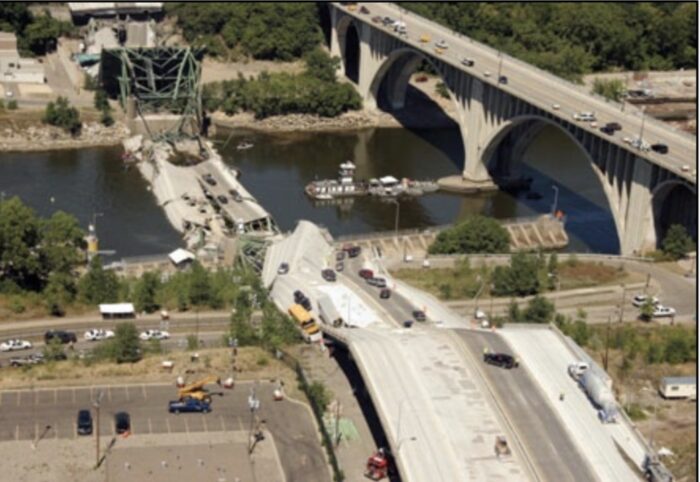Shortly after 6:00 pm on August 1, 2007, the Interstate 35W bridge over the Mississippi River near downtown Minneapolis was loaded with rush hour traffic creeping through an ongoing construction project. Without warning, the bridge collapsed, taking with it 111 vehicles. Thirteen people died and 145 were injured in the collapse of the bridge.
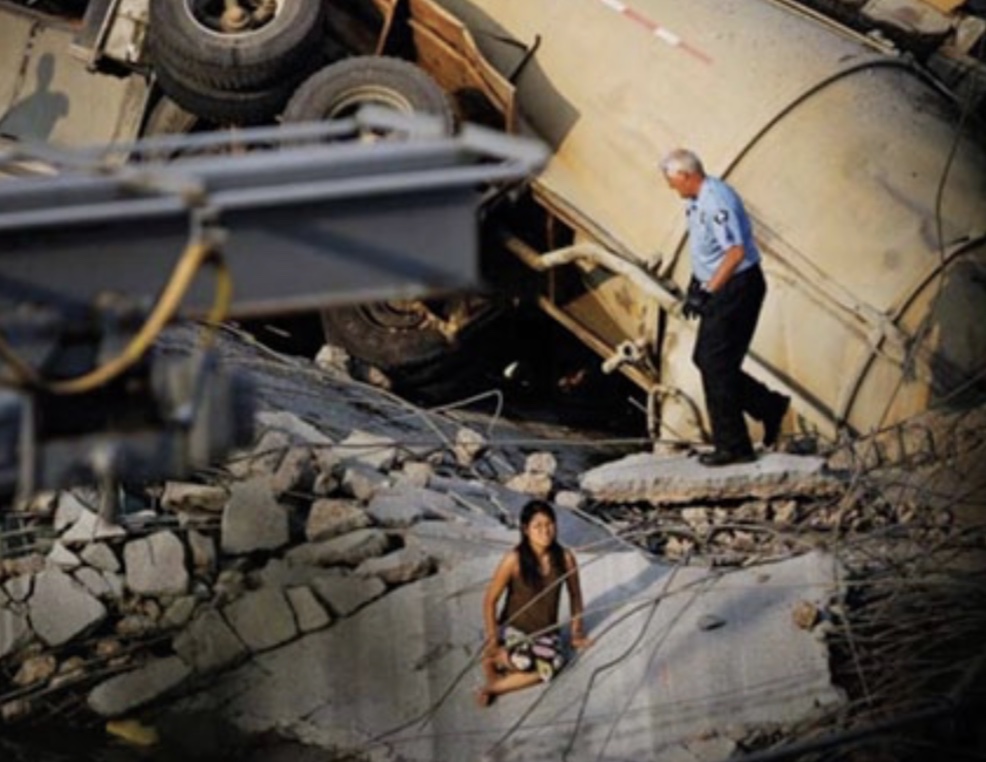
State and local units from fire, law enforcement, emergency medical services, emergency management and public works immediately received alerts. Emergency responders were faced with a number of tasks: (1) rescue people from the vehicles and the water; (2) extinguish car fires; and (3) treat and transport the injured.
The successful rescue and recovery efforts were largely the result of prior planning by a team that had anticipated a major disaster, funded improvements in critical infrastructure and increases in emergency personnel, and trained as a team by working across organizational boundaries.
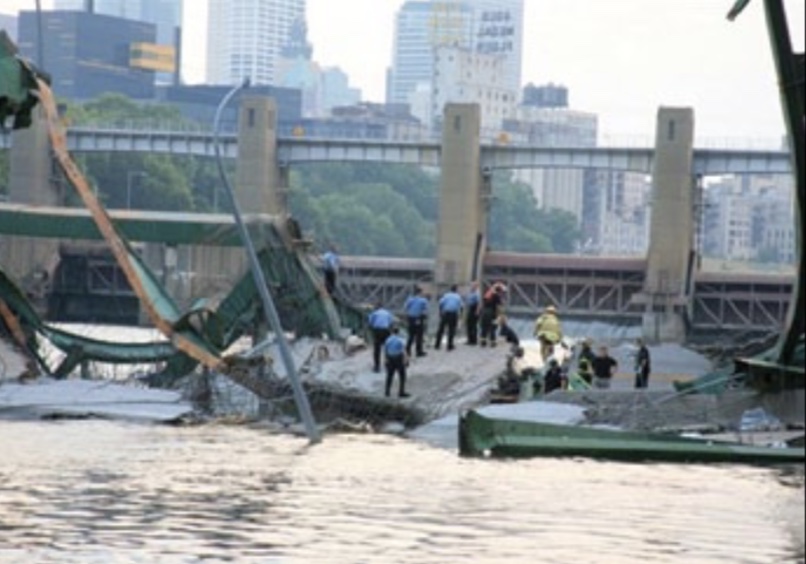
The disaster presented some unique jurisdictional issues. The Federal government owned the bridge, but the bridge was operated by the State of Minnesota. After the collapse, the bridge lodged into the Mississippi River and along the river’s banks. The river was under the jurisdiction of the Hennepin County Sheriff’s Office Water Patrol, but the banks of the river were under the jurisdiction of the Minneapolis Police Department. In addition, multi-agency resources from adjoining counties and cities, the U.S. Army Corp of Engineers, the U.S. Coast Guard, and the U.S. Navy all assisted in the rescue efforts.
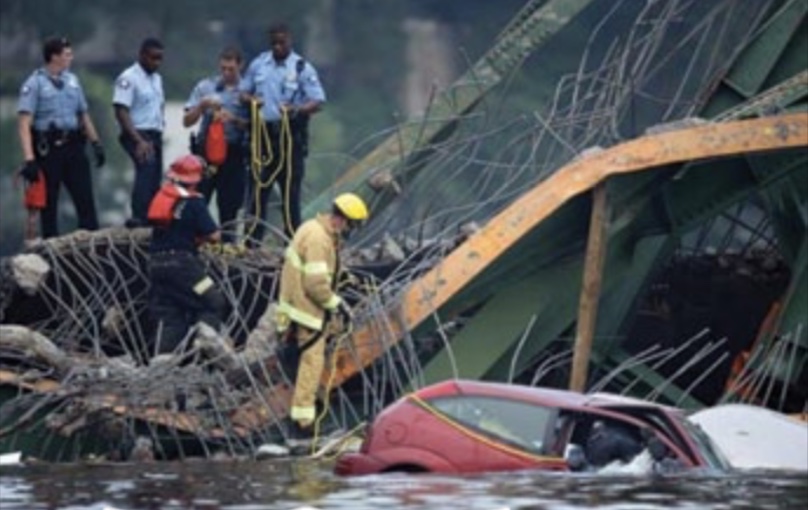
FEMA lauded the overall performance of the rescue efforts and noted that the combination of foresight, investment and teamwork prepared the emergency responders for the disaster. In its report, FEMA noted, ”Strong working relationships and knowledge of roles and procedures were arguably the greatest strengths of the Minneapolis emergency services community’s response. The city had invested heavily in the development of those relationships, which were built through plan development, universal NIMS training, appropriate use of exercises and strategic planning over several years”.
“These factors contributed heavily to creating an environment in which key players not only knew each other, but were familiar with the operations and disaster assignments of others. When it came time to pull together efficiently as a team – they did.”
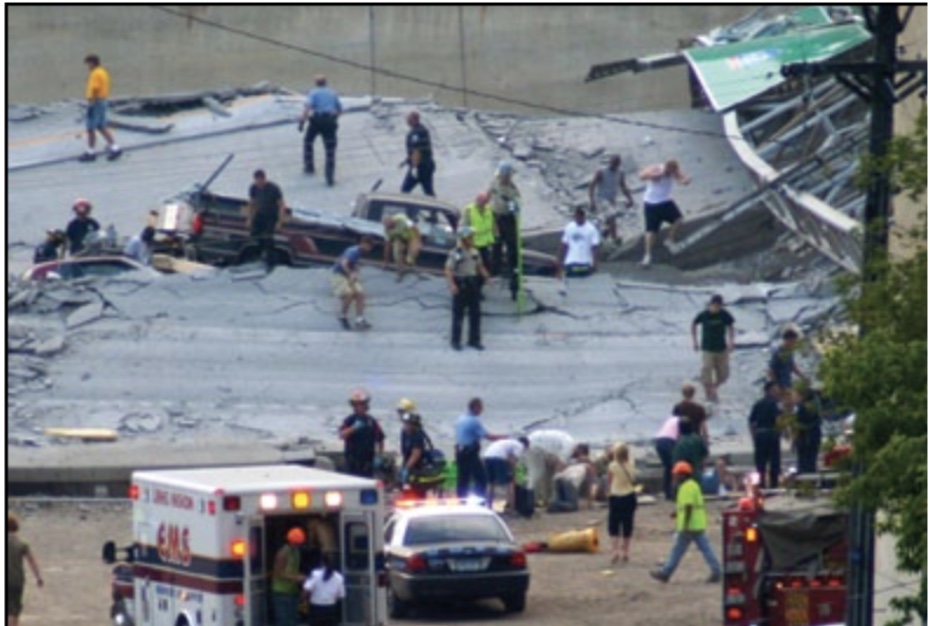
The timeline of events as captured by the FCC below demonstrates that emergency resources were mobilized quickly and effectively during the disaster:
6:02 PM – Bridge collapses without warning.
6:05 PM – EMS units dispatched for possible bridge collapse.
6:06 PM – Minneapolis Fire Department (MFD) dispatched to the bridge for a reported bridge collapse. Dispatch received data from bridge cameras confirming extent of damage. Dispatched units notified of reports of injuries, extensive structural damage, and cars in water.
6:11 PM – First dispatched units arrive on scene. Emergency responders establish command post and assess situation.
6:16 PM – Second alarm status requested and five additional MFD units dispatched.
6:18 PM – Additional MFD units arrive on scene. Responding fire units brief command of status of situation.
6:24 PM – Emergency Operations Center (EOC) opened and staffed 24 hours a day for next four days. On August 5th it began operating 12 hours a day until August 20th when the last body was recovered.
6:25 PM – MFD Assistant Chief of Operations assumes command and sets up command post. Minneapolis Police Department establishes their command post. Operating under the Incident Command System, rescue operations are expanded.
6:26 PM – Hennepin County Sheriff’s Office Supervisor arrives on scene and assumes command of water rescue activities. 12 agencies with 28 watercraft arrive within the first hour. Two 25 foot boats will be dispatched by the Coast Guard and arrive within 5 hours.
6:50 PM – Responding units provide a status of activities. Preliminary search of bridge is now complete, rescue activities proceeding in water, units report a collapse of bridge with some victims entrapped within collapsed structure, they report fires are being contained, and that an engineer is on the bridge to assess its stability.
7:00 PM – Engineers report that bridge stability is questionable.
7:27 PM – It is determined that all individuals on the bridge and next to the water have been rescued. Rescue phase of operation is now complete. Recovery operations will officially begin at dawn on 8/2, the following day.
7:55 PM – Last live rescue victim transported from scene.
8:11 PM – 50 patients have now been transported to various hospitals by EMS. 61 units including 31 ambulances have responded. 110 people will require treatment at hospitals or emergency clinics. 13 deaths will be reported.
Until midnight on August 2nd, the 911 call center received approximately 300 calls per hour. Recovery operations were conducted until August 20th and operations associated with the removal of debris, monitoring of hazardous material, and other activities associated with the disaster continued for even longer.
The National Transportation Safety Board ultimately determined that the probable cause of the collapse of the I-35W bridge was the inadequate load capacity, due to a design error of the gusset plates, which failed under a combination of (1) substantial increases in the weight of the bridge, which resulted from previous bridge modifications, and (2) the traffic and concentrated construction loads on the bridge on the day of the collapse.
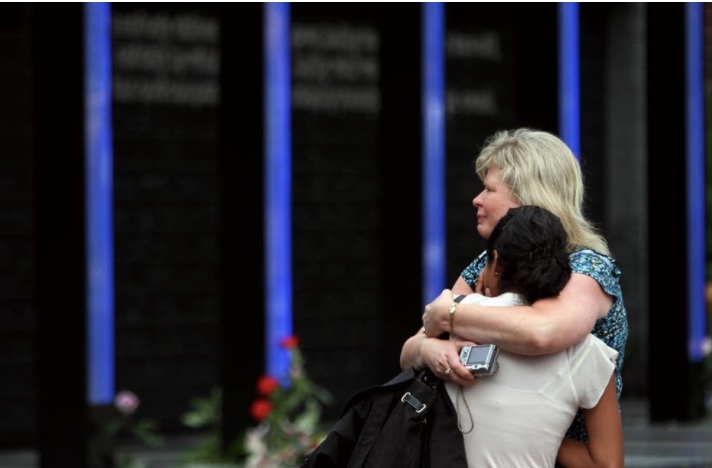
We are thinking today of those who perished in the disaster and of their families and friends, of those who were injured, and of those who arrived on the scene to help all who needed them.
Sources:
“Minneapolis Interstate 35W Bridge Collapse” from Minnesota Legislative Reference Library – Minnesota Issues Resource Guides
“Emergency Communications during the Minneapolis Bridge Disaster: A Technical Case Study” by the Federal Communications Commission’s Public Safety and Homeland Security Bureau’s Communications Systems Analysis Division
“U.S. Fire Administration/Technical Report Series I-35W Bridge Collapse and Response Minneapolis, Minnesota USFA-TR-166/August 2007” from FEMA
Photographs from “Minneapolis Police 150th Anniversary” book published by Acclaim Press (currently out of print)
